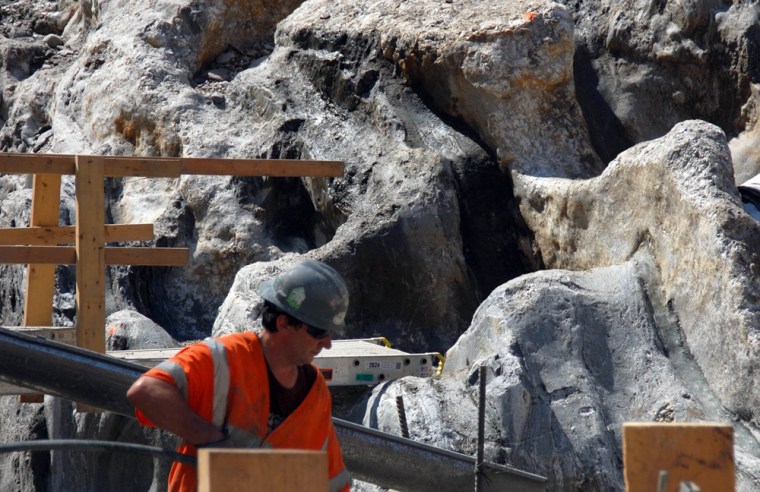Crews excavating the World Trade Center site this summer for the foundations of a new skyscraper have uncovered features carved into the bedrock by glaciers about 20,000 years ago, including a 40-foot-deep pothole.
Exposing the solid rock beneath at the Ground Zero site in lower Manhattan is critical for supporting what will be Tower 4 of the new World Trade Center, being built by Silverstein Properties.
"You want to make sure you're not perching something on a ledge," said Anthony Pontecorvo, a supervising structural engineer at Mueser Rutledge Consulting Engineers, which is working on the project.
While removing the overlying soil is an engineering necessity, the digging has given scientists a rare window into the deep past and formations like the huge pothole.
"There are areas in local parks that have small vertical potholes exposed," Cheryl J. Moss, the senior geologist at Mueser Rutledge, told The New York Times. "But I'm not aware of anything in the city with a whole, self-contained depression on this scale."
Moss and Pontecorvo plan to deliver a lecture about the geology of the site Wednesday at the Tribute WTC Visitor Center, next to the Ground Zero site.
The reminders of the power of glaciers won't be around for long. The pothole and other features are being covered, filled in or blasted away.
"It's nice to look at, but it's all got to go," said Robert B. Reina, a supervising structural engineer at Mueser Rutledge.
